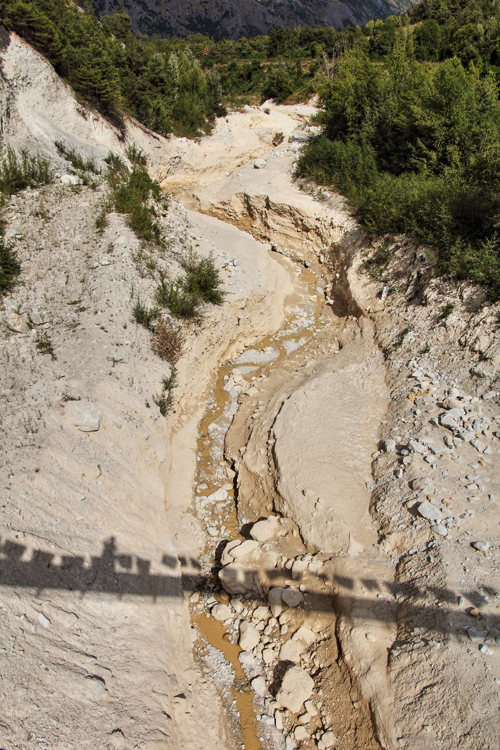22 April 2021–Machine learning could provide up an extra hour of warning time for debris flows along the Illgraben torrent in Switzerland, researchers report at the Seismological Society of America (SSA)’s 2021 Annual Meeting.
Debris flows are mixtures of water, sediment and rock that move rapidly down steep hills, triggered by heavy precipitation and often containing tens of thousands of cubic meters of material. Their destructive potential makes it important to have monitoring and warning systems in place to protect nearby people and infrastructure.
In her presentation at SSA, Małgorzata Chmiel of ETH Zürich described a machine learning approach to detecting and alerting against debris flows for the Illgraben torrent, a site in the European Alps that experiences significant debris flows and torrential events each year.
Seismic records from stations located in the Illgraben catchment, from 20 previous debris flow events, were used to train an algorithm to recognize the seismic signals of debris flow formation, accurately detecting early flows 90% of the time.
The machine learning system was able to detect all 13 debris flows and torrential events that occurred during a three-month period in 2020. The alarm triggered by the system occurred between 20 minutes and an hour and half earlier than estimated arrival time of the flow at the torrent’s first check dam, depending on the flow’s velocity.

Debris flow alerts for the Illgraben torrent come from geophones at three check dams and sensors measuring flow height. Thirty check dams were installed in the lower part of the channel after a disastrous event in 1961 that overflowed the channel and destroyed a bridge.
The current system limits debris flow detection to a dam located below the torrent’s upper catchment. “However, debris flows usually form in the upper catchment, above check dam one,” Chmiel explained. “To improve the current warning system, we would need to detect the torrential events in their initial forming phase before they arrive at check dam one.”
The regularity and variability of Illgraben debris flows convinced the researchers that the torrent would be a good place to test out their machine learning model as an alternative warning system.
“We thought that the size of the dataset should be enough to train a machine learning model for robust detection. Moreover, what makes machine learning particularly appealing for Illgraben is that the detector can be improved every year, with data from new events, something that is not possible to obtain with traditional approaches,” said Chmiel.
Chmiel said the system works well at distinguishing torrential events from seismic signals produced by human activity, rainfall and earthquakes. The next step, she noted, will be to explore whether the machine learning model can also distinguish between small and larger and potentially more damaging debris flows.
Most debris flows in Illgraben are activated by heavy summer rainstorms, although snowmelt can condition the slope and potentially may trigger some flows in the late spring or early summer, said Chmiel. A large debris flow might threaten the village of Susten, next to the lower part of the torrent, or the area’s popular hiking trails around the channel.
